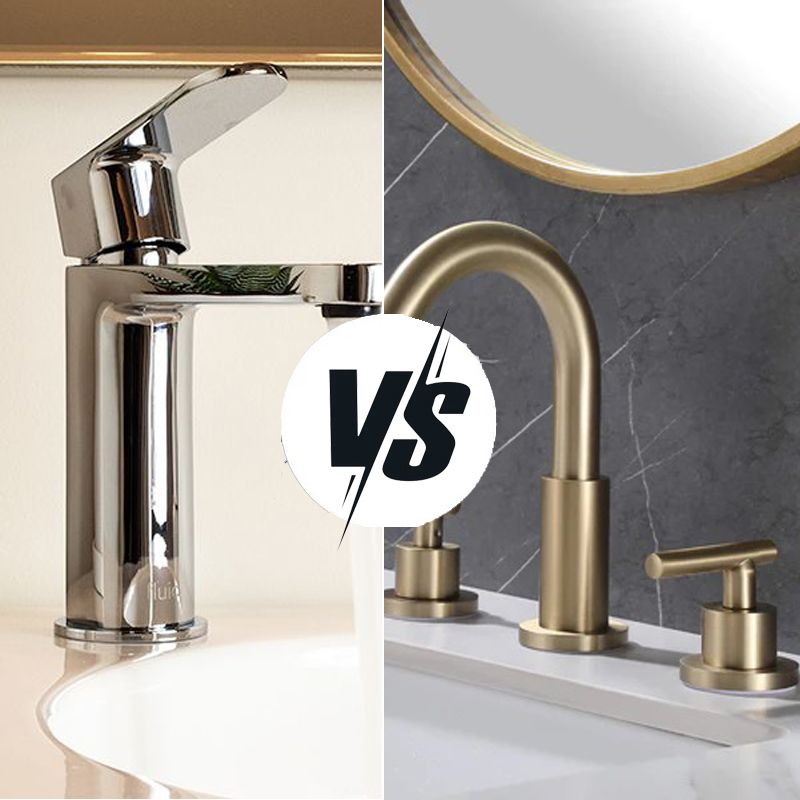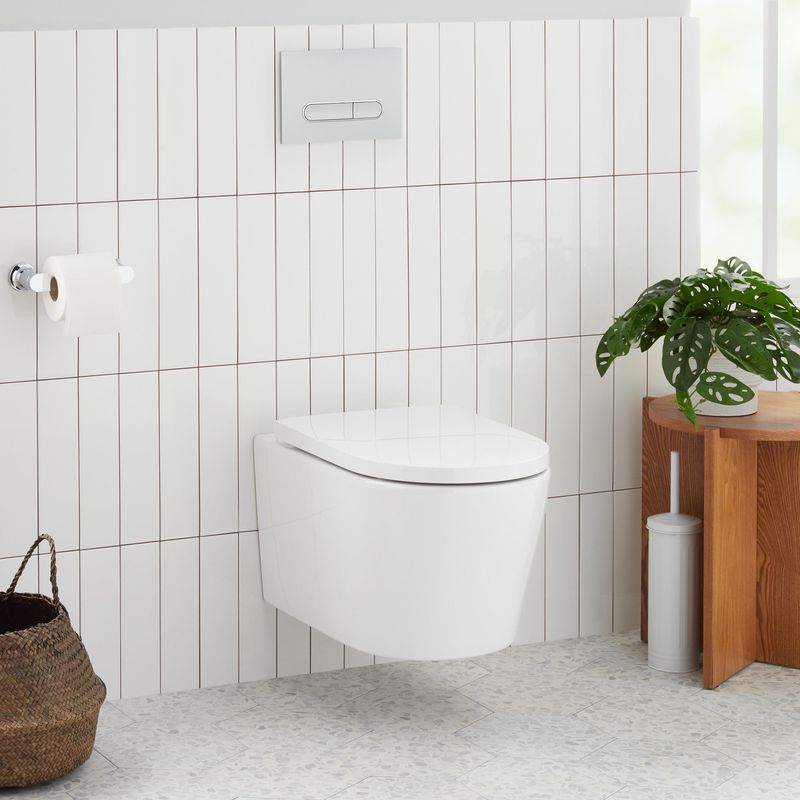 English
English
Jabra Sanitary is a sanitaryware supplier offering toilets, sinks, faucets, bathtubs, etc., at competitive prices. If you're a distributor, wholesaler, or project contractor, get a quote today!
 $23.9 Limited-time Offer
$23.9 Limited-time Offer Consignment Policy
Consignment Policy 20 Years of Experience
20 Years of Experience
When planning a kitchen or bathroom renovation or simply updating your current setup, choosing the right sink can make a world of difference.
One option that's gaining popularity among homeowners is the undermount sink. Not only does it offer a sleek, modern look, but it also brings practical benefits that make daily kitchen tasks easier.
However, like any home improvement decision, there are both pros and cons to consider before you take the plunge. We'll also compare them with other popular sink types and provide expert advice on how to choose the right undermount sink for your kitchen.
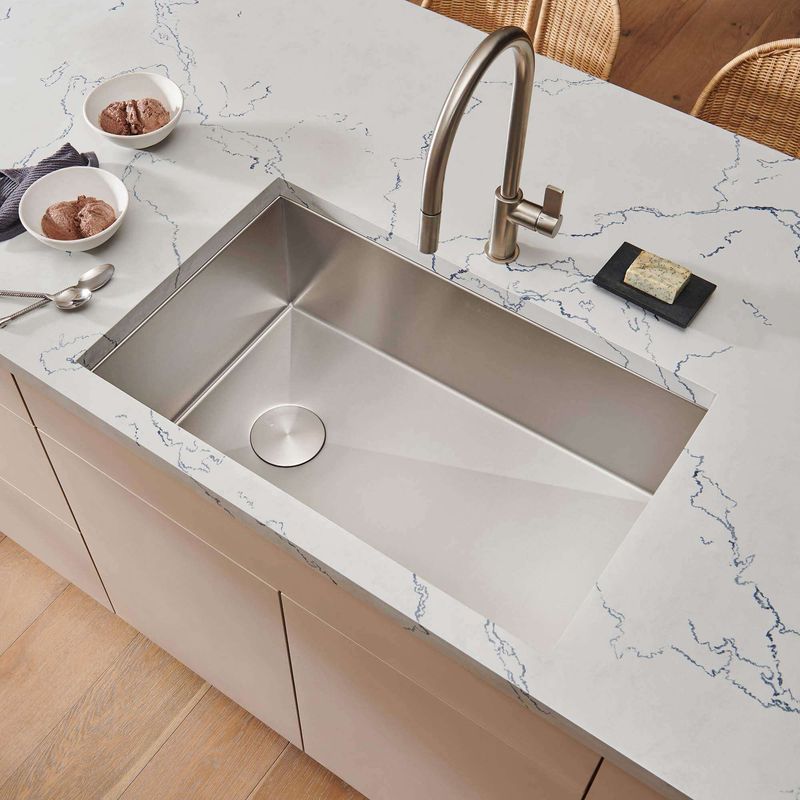
Table of Contents
What is an Undermount Sink?
Pros of Undermount Sinks
Cons of Undermount Sinks
Undermount vs. Overmount vs. Farmhouse Sinks: Key Differences
Are Undermount Sinks Right for Your Kitchen?
What to Look for in an Undermount Sink?
FAQs
Final Words
What is an Undermount Sink?
An undermount sink is a type of sink that is installed beneath the countertop. The sink's rim is mounted underneath the counter, creating a smooth, seamless transition between the sink and the surrounding countertop. This installation method provides a clean and modern look that many homeowners love. <See undermount vs drop in sink>
Undermount sinks are often seen as a high-end feature and can add to the resale value of your home. They are an attractive option for homeowners looking to improve their kitchen's look and functionality.
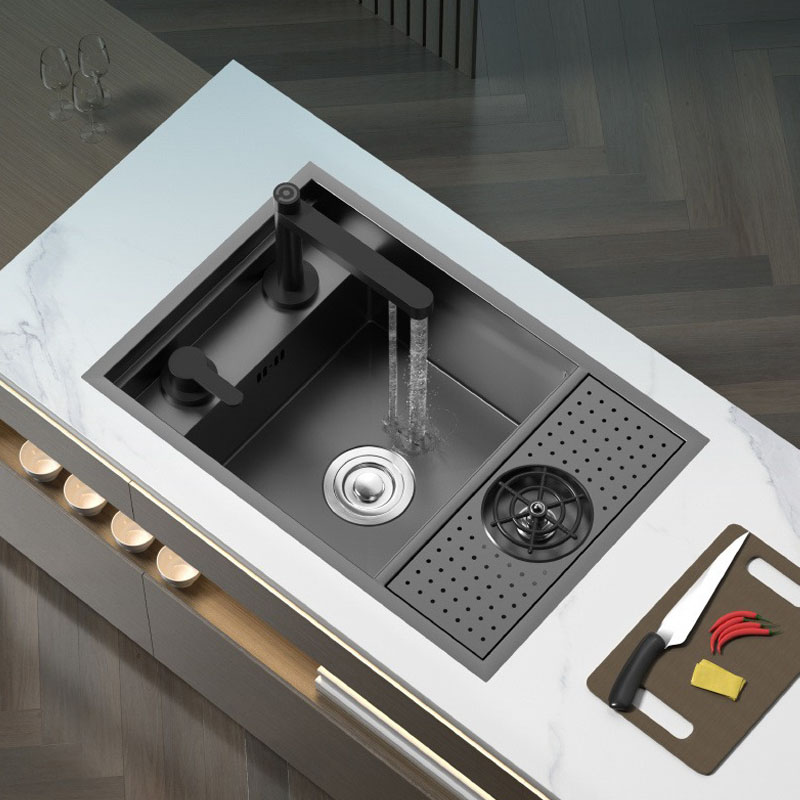 Ads
Ads
Undermount Double Bowl Workstation Sink
Here is the Undermount Double Bowl Workstation Sink H01, a versatile and functional addition to your kitchen. This double bowl workstation sink features a unique lifting faucet with dual hot and cold water outlets, easily adjustable to meet your needs without obstructing your workspace.
Pros of Undermount Sinks
Undermount sinks offer several advantages that can improve both the function and aesthetic of your kitchen or bathroom space. Let's examine some of the key advantages of choosing an undermount sink:
Seamless and Sleek Aesthetics
One of the most attractive features of an undermount sink is its sleek and minimalist appearance. Since the sink is installed underneath the countertop, there's no visible lip or rim around the edge.
This creates a smooth, continuous surface that enhances the overall design of the kitchen, giving it a more sophisticated, modern look.
The seamless design also eliminates the chances of debris and dirt collecting around the edges of the sink, which can make cleaning the kitchen easier and less time-consuming.
Easy to Clean
Cleaning an undermount sink is a breeze. Because the sink is installed beneath the countertop, no lip catches crumbs or spills.
This means that when you wipe down your countertops, the food debris and liquids can be effortlessly swept directly into the sink. This simple feature saves time and ensures your kitchen looks cleaner with less effort.
Moreover, undermount sinks are often paired with solid surface countertops like granite or quartz, which are relatively easy to wipe clean.
Maximize Counter Space
With an undermount sink, you can maximize your available counter space. Since no sink lip or edges is protruding above the counter, you can use the entire surface to place items.
This is especially useful when you have a busy kitchen with multiple tasks happening at once, from food prep to dishwashing. You'll have more room to work and store kitchen essentials.
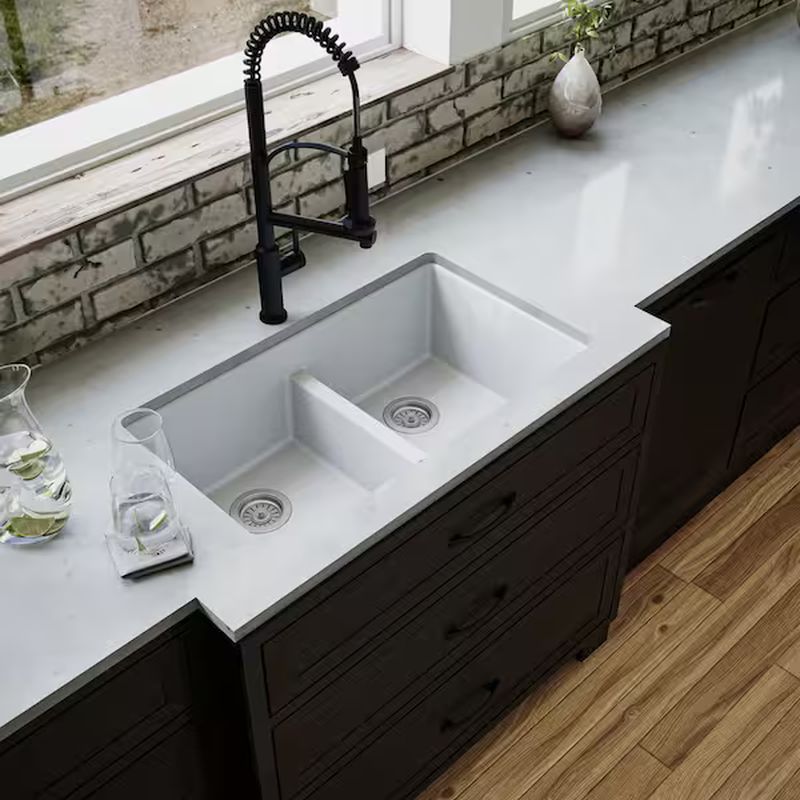
Convenient to Wash Large Utensils
The design of an undermount sink makes it much easier to wash large pots, pans, and utensils.
Because the sink's edge is flush with the countertop, you can slide large dishes directly from the counter into the sink without any resistance. This can be especially useful for those who frequently prepare large meals or have big kitchenware to clean.
Versatile Faucet Placement
Another significant advantage of undermount sinks is the flexibility they offer in faucet placement. The faucet can be placed further back or to the side, giving you more control over your kitchen layout and design.
Enhanced Durability
Undermount sinks are built to last. Typically made from high-quality materials like stainless steel or composite stone, these sinks are durable and resistant to chips, cracks, and stains. They are often designed to withstand the rigors of a busy kitchen environment.
In addition, because there is no rim exposed, the sink is less prone to corrosion and wear, making it a great investment for long-term durability.
Doesn't Require Caulking
A major advantage of undermount sinks is that they don't require caulking around the edges. Since undermount sinks are already sealed beneath the countertop, there's no need for extra caulking—saving you time, hassle, and maintenance.
Great for Resale Value
Investing in an undermount sink can boost your home's resale value. Potential buyers tend to appreciate the sleek, modern look of these sinks. The fact that they offer both style and practicality makes them a desirable feature in a kitchen.
Additionally, the easy maintenance and long-lasting durability of undermount sinks are selling points that can make your kitchen or bathroom stand out during showings.
Cons of Undermount Sinks
While undermount sinks offer numerous advantages, they also have a few potential downsides. Let's take a closer look at the undermount sink disadvantages:
Higher Installation Costs
Undermount sinks are typically more expensive to install than traditional overmount sinks. This is because the installation process requires more precision and labor.
The sink needs to be mounted directly underneath the countertop, which often requires professional installation.
Not One Size Fits All
One of the limitations of undermount sinks is that they don't fit every kitchen design. The installation of an undermount sink requires a solid, sturdy countertop to support its weight. If your countertop is made of a softer or weaker material, it might not be suitable for an undermount sink.
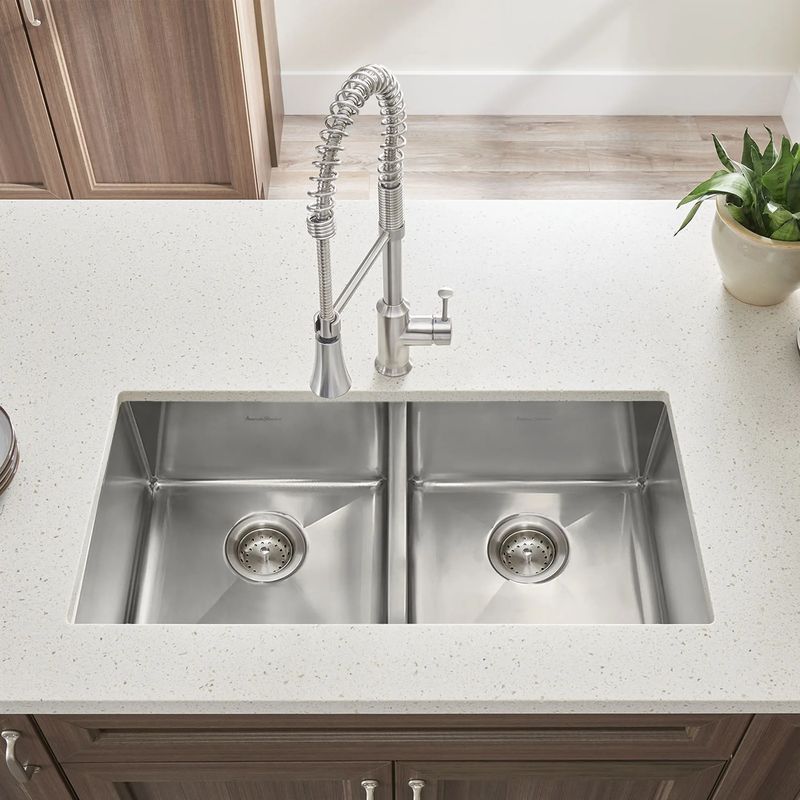
Countertop Material Restrictions
Undermount sinks are best suited for countertops made of materials like granite, marble, or quartz. These materials can handle the weight of the sink and provide a secure, stable installation.
However, if you have a laminate, wood, or other softer countertop material, an undermount sink may not be compatible. These types of countertops could potentially be damaged during the installation process or may not be able to support the weight of the sink.
Susceptible to Leaks and Mold
If an undermount sink is not installed properly, or if the seal around the sink breaks over time, it can lead to leaks.
Since the sink is mounted beneath the countertop, any water that leaks could be trapped in the area between the sink and the countertop. This can lead to mold growth and water damage, which can be difficult and costly to repair.
Risk of Overflow
Undermount sinks generally have a more seamless look with fewer seams and joints. However, this design means that the edges are flush with the countertop, which may make it more difficult to spot when the sink is overflowing.
Sink Cleaning is Difficult
While the lack of visible seams is a visual advantage, it can make cleaning a bit more challenging. Undermount sinks are prone to collecting grime and debris along the edges where the sink meets the countertop. Without a visible lip to catch any spills, food particles can slip between the sink and the counter, making it harder to clean the entire area.
Counters May Not Be Able to Handle the Weight
Laminate and tile counters may not be able to handle the weight of undermount sinks because they are mounted from underneath the surface of the countertop. Laminate can buckle and droop, and tile can crack and shatter—both costly issues that are best avoided.
Undermount vs. Overmount vs. Farmhouse Sinks: Key Differences
When choosing a sink for your kitchen or bathroom, it's important to consider the different types of sink designs available.
Here, we'll compare undermount, overmount, and farmhouse sinks across several key categories: Cleaning Ease, Installation Cost, Countertop Compatibility, and Lifetime Durability.
Feature |
Undermount Sink |
Overmount Sink |
Farmhouse Sink |
|---|---|---|---|
Cleaning Ease |
Easy to clean with a seamless design, allowing crumbs and liquids to be swept directly into the sink. However, dirt can accumulate between the sink and countertop if not maintained regularly. |
More difficult to clean due to the lip around the sink, which can trap grime and food particles. However, the countertop itself is easier to clean. |
A large basin makes it easier to clean large items. However, the exposed front can accumulate dirt and stains. The design is less practical for cleaning around the edges. |
Installation Cost |
Higher installation cost due to the complexity of mounting the sink underneath the countertop. Require professional installation to avoid leaks and ensure proper sealing. |
Lower installation cost. Easier to install, with most models being DIY-friendly. The sink sits on top of the countertop, so no special preparation is needed. |
More expensive to install than both undermount and overmount sinks. Require custom cabinetry and precise installation to accommodate the large, exposed front design. |
Countertop Compatibility |
Best for solid countertop materials like granite, quartz, and marble. Softer materials like laminate are not ideal due to installation difficulties and the need for extra reinforcement. |
More versatile and compatible with a wider variety of countertop materials, including laminate, wood, and granite. |
Requires custom cabinetry and is most often paired with solid stone countertops like granite or quartz. |
Lifetime Durability |
Highly durable and long-lasting with proper care. Less prone to damage or wear due to the seamless design, making it a great option for long-term use. |
Durable, but the lip around the sink may become worn, chipped, or stained over time, reducing its overall lifespan compared to undermount or farmhouse sinks. |
Known for long-lasting durability, especially models made from materials like fireclay, cast iron, or stone. The deep basin design prevents damage from heavy use. But maintenance is required to keep the front-facing area clean. |
Are Undermount Sinks Right for Your Kitchen?
Deciding whether an undermount sink is the right choice for your kitchen or bathroom depends on various factors, including your style preferences, budget, and kitchen layout.
Let's break down the key considerations that can help you determine if an undermount sink is the right fit for your space:
Kitchen Style and Aesthetics
Undermount sinks are known for their sleek, modern appearance. They provide a clean and minimalist look because the sink is mounted underneath the countertop.
If you want a sophisticated, contemporary kitchen, an undermount sink can elevate the aesthetic. However, if your kitchen leans more traditional or rustic, a farmhouse or overmount sink might align better with your design goals.
Countertop Material
Undermount sinks are compatible with materials like granite, quartz, and marble, which are strong enough to support the weight of the sink. If you already have or plan to install one of these countertop materials, an undermount sink could be a perfect choice.
However, if your countertop is made from laminate or a material that's not as durable, you may run into issues with installation or support. For some countertops, additional reinforcement may be needed to ensure a secure mount.
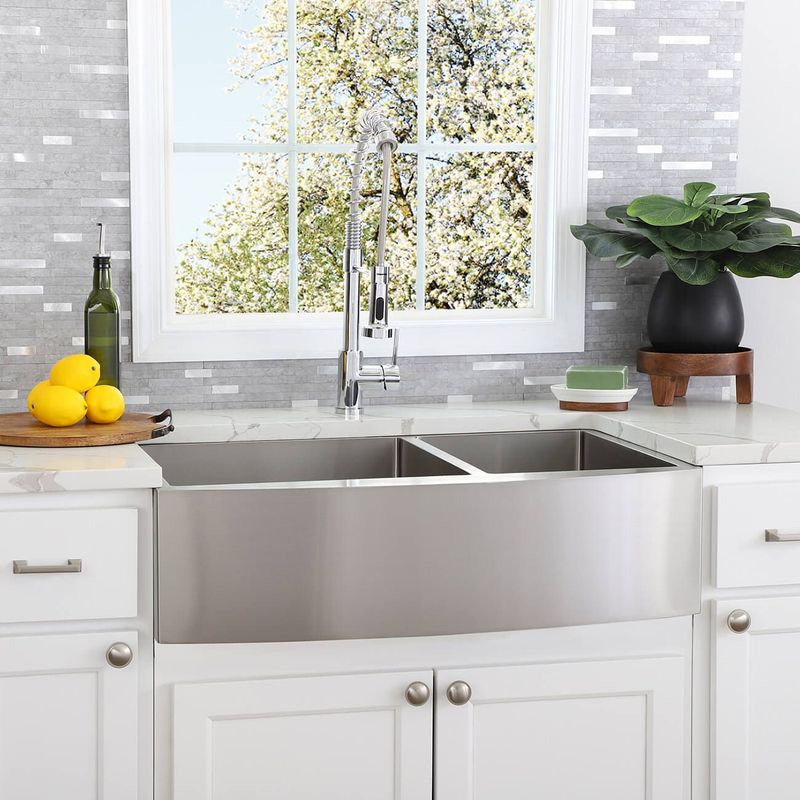
Maintenance and Cleaning Preferences
If you prefer a low-maintenance, easy-to-clean sink, undermount sinks excel in this area. Since there's no lip or edge, food particles and liquids can be wiped directly into the sink, reducing the potential for build-up.
However, you'll need to be proactive in cleaning the space between the sink and countertop to avoid grime accumulation.
If you don't mind a bit more effort in cleaning, an overmount sink may suit you better.
Budget
Undermount sinks come with a higher upfront cost due to installation and potential countertop modifications.
If you have a larger budget and are willing to invest in professional installation, an undermount sink can be a worthwhile investment. However, if you're working with a smaller budget, you may want to consider an overmount sink, which is more affordable to install.
Longevity and Durability
Undermount sinks are highly durable and can last for many years with proper care. They're less prone to damage compared to overmount sinks, which can show wear around the lip over time. If you're looking for a long-lasting, robust sink, an undermount sink is a solid choice.
How Much Space Do You Need?
Undermount sinks are great for maximizing counter space. Since there's no lip to catch debris or block the counter, it creates a seamless flow, making your countertop appear more spacious and organized.
If you're working with a small kitchen or want to keep your workspace as open as possible, an undermount sink can help achieve that.
But if you're looking for a larger basin or a more defined look, you might prefer a farmhouse sink.
In conclusion, undermount sinks are an excellent choice for kitchens or bathrooms that need a modern, clean design and easy-to-maintain features.
However, they may not be right for every space, particularly if you're working with certain countertop materials, have a tight budget, or prefer a more traditional style.
What to Look for in an Undermount Sink?
When choosing an undermount sink, there are a few important things to consider. The right sink will make your kitchen or bathroom look great and work well. Here are the key things to look for:
1. Comfortable Size
Choose a sink that fits well in your kitchen. Consider how much space you need for washing dishes or prepping food. Undermount sinks come in different sizes, from single-basin to double-basin models. If you have a larger family or cook often, a bigger sink might be best. For small kitchens, a compact sink may be more practical.
2. Durable Materials
The material of the sink affects both how it looks and how long it lasts. Pick a material that suits your kitchen and can handle daily use. Popular options include:
- Stainless Steel: Strong, easy to clean, and resistant to rust. It's the most common choice for modern kitchens.
- Composite Granite or Quartz: These are stylish and durable. They come in different colors and resist scratches and stains.
- Fireclay or Ceramic: A classic look. Fireclay sinks are resistant to chips and scratches, making them a good choice for a vintage style.
3. Number of Basins
Undermount sinks come in single-basin or double-basin designs. A single-basin sink is great for washing large pots and pans. A double-basin sink lets you wash dishes on one side and rinse or prep food on the other. Think about how you use your sink and how much space you need.
4. Purchase from a Trusted Brand
It's important to buy from a reliable brand. Well-known brands like Jabra Sanitary, Kohler, Franke, and Blanco often provide higher quality. Look at reviews before making a purchase. A trusted brand means better durability and customer service.
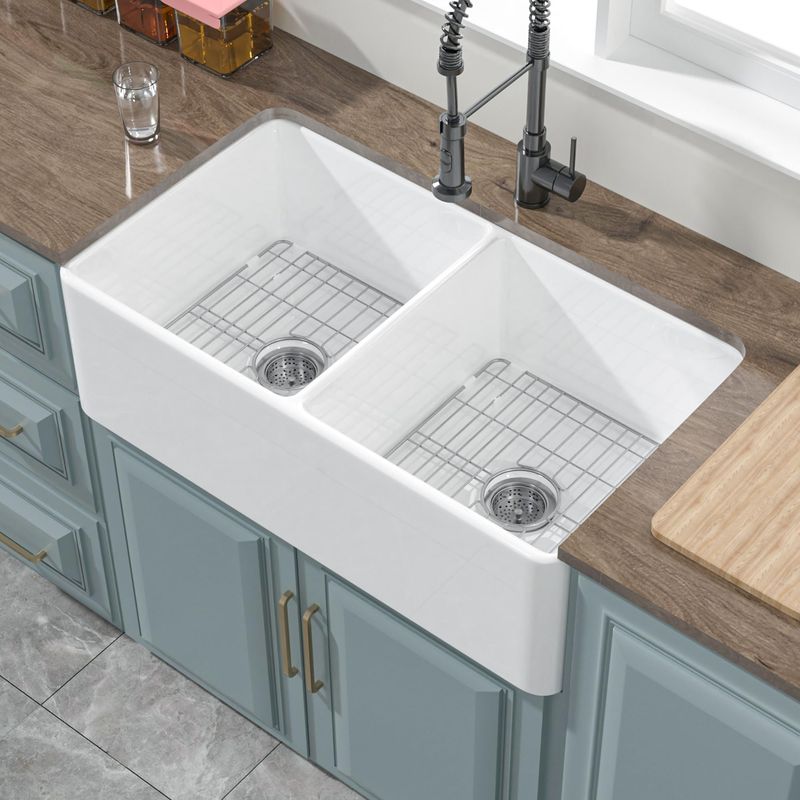
5. Price
Undermount sinks can vary in price. Stainless steel sinks are usually cheaper, while composite or fireclay sinks are more expensive. A high-quality sink might cost more upfront but last longer. Consider your budget and choose the best sink for your needs.
6. Proper Installation
An undermount sink must be installed properly to avoid leaks and damage. Hire a professional who knows how to install an undermount sink. Be sure the sink is sealed well to prevent water from leaking between the sink and the countertop.
FAQs
Here are some common questions about undermount sinks and their installation:
How do you secure an undermount sink?
Undermount sinks are secured by attaching the sink to the underside of the countertop. Strong adhesives, clips, and brackets are used to keep the sink in place. It's important to hire a professional to ensure proper installation and prevent leaks.
How long do undermount sinks last?
With proper installation and maintenance, a good-quality undermount sink can last 10-20 years or more. The material you choose, such as stainless steel or granite, can also affect its lifespan.
Can you change an overmount sink to undermount?
Yes, it is possible to replace an overmount sink with an undermount sink. But it requires some changes. The countertop must be modified, and you may need to reinforce it to support the weight of the undermount sink. It's best to consult a professional for this kind of change.
What type of countertop is best for an undermount sink?
Undermount sinks work best with durable, solid countertop materials like granite, quartz, and marble. These materials are strong enough to support the weight of the sink and allow for secure mounting. Laminate countertops are not ideal for undermount sinks, as they can't provide the necessary support.
Can an undermount sink be replaced without damaging the countertop?
Replacing an undermount sink can be tricky, and there's a risk of damaging the countertop.
The adhesive and sealant used to secure the sink may be difficult to remove, and the countertop could be affected during the process. It's important to have an experienced professional handle the replacement to minimize any damage.
Final Words
Undermount sinks offer a sleek, modern look that can enhance the aesthetic and functionality of your kitchen. With their easy-to-clean design and ability to maximize counter space, they are a popular choice for homeowners who want both style and practicality.
However, they may not be the best option for every kitchen or bathroom, especially if you're working with a budget, certain countertop materials, or a more traditional style.
Looking to upgrade? Professional expertise is essential. Trust Jabra Sanitary for safe, reliable installation that prevents leaks and water damage. Contact us now to get started.









